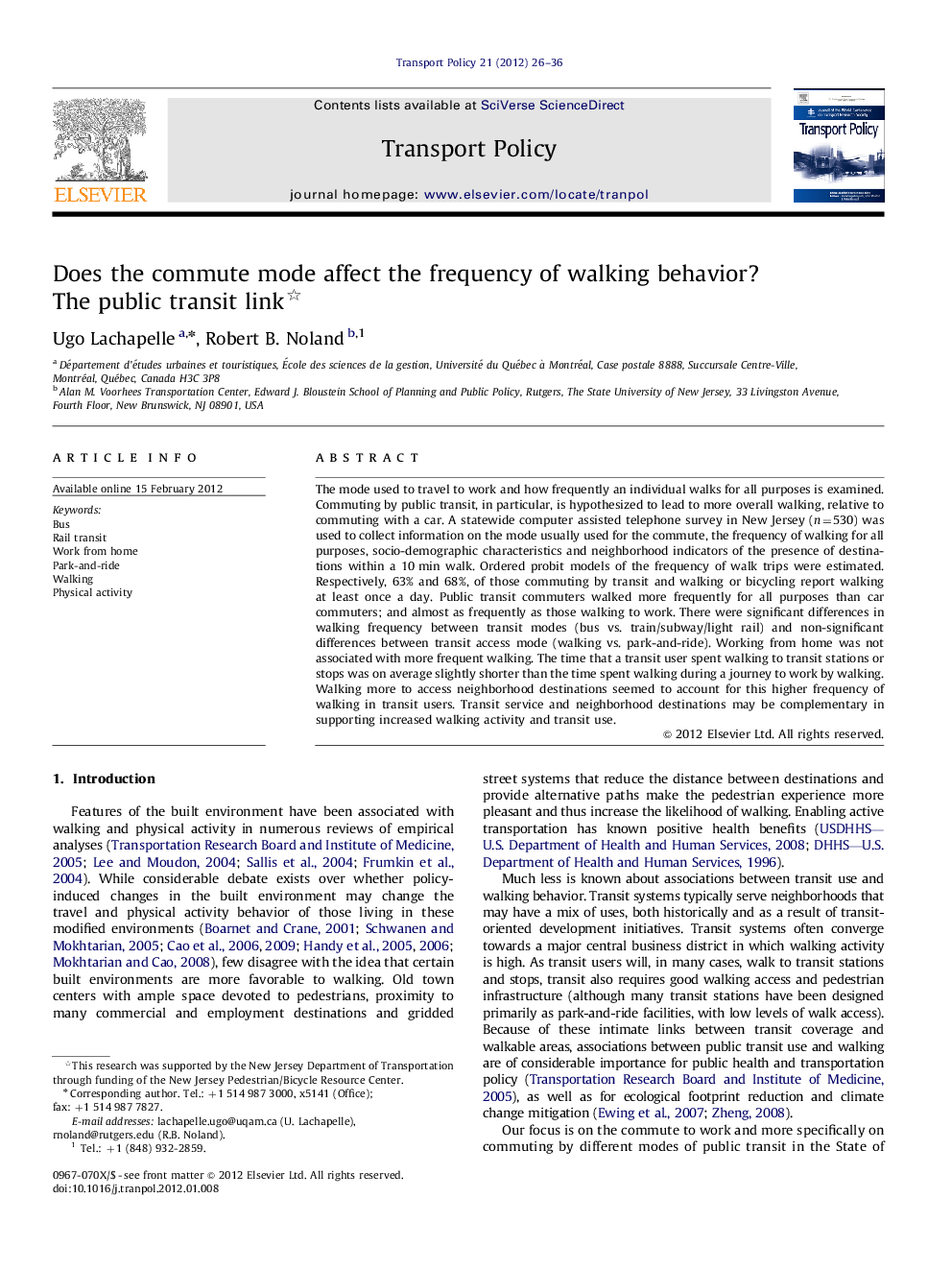| کد مقاله | کد نشریه | سال انتشار | مقاله انگلیسی | نسخه تمام متن |
|---|---|---|---|---|
| 1065181 | 1485856 | 2012 | 11 صفحه PDF | دانلود رایگان |

The mode used to travel to work and how frequently an individual walks for all purposes is examined. Commuting by public transit, in particular, is hypothesized to lead to more overall walking, relative to commuting with a car. A statewide computer assisted telephone survey in New Jersey (n=530) was used to collect information on the mode usually used for the commute, the frequency of walking for all purposes, socio-demographic characteristics and neighborhood indicators of the presence of destinations within a 10 min walk. Ordered probit models of the frequency of walk trips were estimated. Respectively, 63% and 68%, of those commuting by transit and walking or bicycling report walking at least once a day. Public transit commuters walked more frequently for all purposes than car commuters; and almost as frequently as those walking to work. There were significant differences in walking frequency between transit modes (bus vs. train/subway/light rail) and non-significant differences between transit access mode (walking vs. park-and-ride). Working from home was not associated with more frequent walking. The time that a transit user spent walking to transit stations or stops was on average slightly shorter than the time spent walking during a journey to work by walking. Walking more to access neighborhood destinations seemed to account for this higher frequency of walking in transit users. Transit service and neighborhood destinations may be complementary in supporting increased walking activity and transit use.
► A statewide survey was conducted in New Jersey to examine walking behavior.
► Transit commuters walked as frequently as walk commuters and just as far.
► Transit and walk commuters walked more for various non-work purposes compared to car commuters.
► Those working from home walked less than those who walk or take transit to work.
► Results were similar for rail and bus commuters, and for those who walked to transit or used park-and-ride.
Journal: Transport Policy - Volume 21, May 2012, Pages 26–36